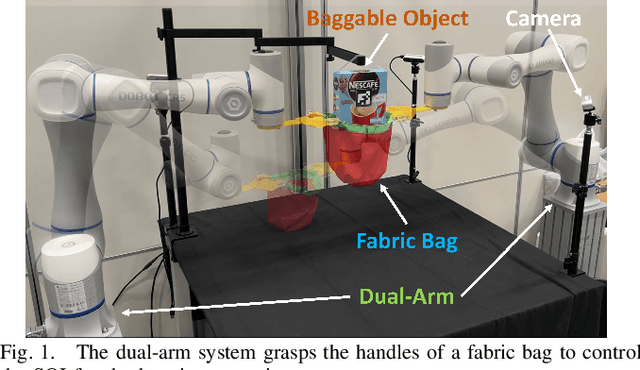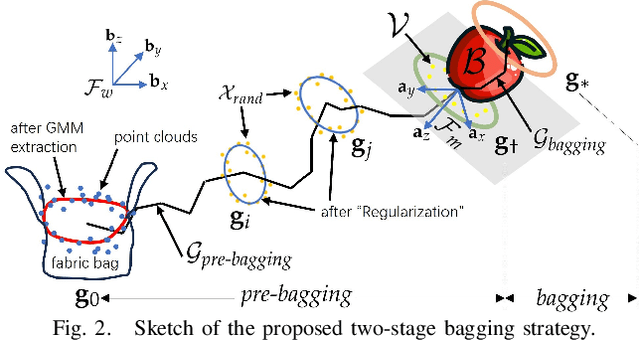Chen Wang
Hye-Young
Instance Generation for Meta-Black-Box Optimization through Latent Space Reverse Engineering
Sep 19, 2025Abstract:To relieve intensive human-expertise required to design optimization algorithms, recent Meta-Black-Box Optimization (MetaBBO) researches leverage generalization strength of meta-learning to train neural network-based algorithm design policies over a predefined training problem set, which automates the adaptability of the low-level optimizers on unseen problem instances. Currently, a common training problem set choice in existing MetaBBOs is well-known benchmark suites CoCo-BBOB. Although such choice facilitates the MetaBBO's development, problem instances in CoCo-BBOB are more or less limited in diversity, raising the risk of overfitting of MetaBBOs, which might further results in poor generalization. In this paper, we propose an instance generation approach, termed as \textbf{LSRE}, which could generate diverse training problem instances for MetaBBOs to learn more generalizable policies. LSRE first trains an autoencoder which maps high-dimensional problem features into a 2-dimensional latent space. Uniform-grid sampling in this latent space leads to hidden representations of problem instances with sufficient diversity. By leveraging a genetic-programming approach to search function formulas with minimal L2-distance to these hidden representations, LSRE reverse engineers a diversified problem set, termed as \textbf{Diverse-BBO}. We validate the effectiveness of LSRE by training various MetaBBOs on Diverse-BBO and observe their generalization performances on either synthetic or realistic scenarios. Extensive experimental results underscore the superiority of Diverse-BBO to existing training set choices in MetaBBOs. Further ablation studies not only demonstrate the effectiveness of design choices in LSRE, but also reveal interesting insights on instance diversity and MetaBBO's generalization.
BagIt! An Adaptive Dual-Arm Manipulation of Fabric Bags for Object Bagging
Sep 11, 2025



Abstract:Bagging tasks, commonly found in industrial scenarios, are challenging considering deformable bags' complicated and unpredictable nature. This paper presents an automated bagging system from the proposed adaptive Structure-of-Interest (SOI) manipulation strategy for dual robot arms. The system dynamically adjusts its actions based on real-time visual feedback, removing the need for pre-existing knowledge of bag properties. Our framework incorporates Gaussian Mixture Models (GMM) for estimating SOI states, optimization techniques for SOI generation, motion planning via Constrained Bidirectional Rapidly-exploring Random Tree (CBiRRT), and dual-arm coordination using Model Predictive Control (MPC). Extensive experiments validate the capability of our system to perform precise and robust bagging across various objects, showcasing its adaptability. This work offers a new solution for robotic deformable object manipulation (DOM), particularly in automated bagging tasks. Video of this work is available at https://youtu.be/6JWjCOeTGiQ.
Text to Query Plans for Question Answering on Large Tables
Aug 26, 2025Abstract:Efficient querying and analysis of large tabular datasets remain significant challenges, especially for users without expertise in programming languages like SQL. Text-to-SQL approaches have shown promising performance on benchmark data; however, they inherit SQL's drawbacks, including inefficiency with large datasets and limited support for complex data analyses beyond basic querying. We propose a novel framework that transforms natural language queries into query plans. Our solution is implemented outside traditional databases, allowing us to support classical SQL commands while avoiding SQL's inherent limitations. Additionally, we enable complex analytical functions, such as principal component analysis and anomaly detection, providing greater flexibility and extensibility than traditional SQL capabilities. We leverage LLMs to iteratively interpret queries and construct operation sequences, addressing computational complexity by incrementally building solutions. By executing operations directly on the data, we overcome context length limitations without requiring the entire dataset to be processed by the model. We validate our framework through experiments on both standard databases and large scientific tables, demonstrating its effectiveness in handling extensive datasets and performing sophisticated data analyses.
Retrieval-Augmented Review Generation for Poisoning Recommender Systems
Aug 21, 2025Abstract:Recent studies have shown that recommender systems (RSs) are highly vulnerable to data poisoning attacks, where malicious actors inject fake user profiles, including a group of well-designed fake ratings, to manipulate recommendations. Due to security and privacy constraints in practice, attackers typically possess limited knowledge of the victim system and thus need to craft profiles that have transferability across black-box RSs. To maximize the attack impact, the profiles often remains imperceptible. However, generating such high-quality profiles with the restricted resources is challenging. Some works suggest incorporating fake textual reviews to strengthen the profiles; yet, the poor quality of the reviews largely undermines the attack effectiveness and imperceptibility under the practical setting. To tackle the above challenges, in this paper, we propose to enhance the quality of the review text by harnessing in-context learning (ICL) capabilities of multimodal foundation models. To this end, we introduce a demonstration retrieval algorithm and a text style transfer strategy to augment the navie ICL. Specifically, we propose a novel practical attack framework named RAGAN to generate high-quality fake user profiles, which can gain insights into the robustness of RSs. The profiles are generated by a jailbreaker and collaboratively optimized on an instructional agent and a guardian to improve the attack transferability and imperceptibility. Comprehensive experiments on various real-world datasets demonstrate that RAGAN achieves the state-of-the-art poisoning attack performance.
Maximizing GPU Efficiency via Optimal Adapter Caching: An Analytical Approach for Multi-Tenant LLM Serving
Aug 11, 2025Abstract:Serving LLM adapters has gained significant attention as an effective approach to adapt general-purpose language models to diverse, task-specific use cases. However, serving a wide range of adapters introduces several and substantial overheads, leading to performance degradation and challenges in optimal placement. To address these challenges, we present an analytical, AI-driven pipeline that accurately determines the optimal allocation of adapters in single-node setups. This allocation maximizes performance, effectively using GPU resources, while preventing request starvation. Crucially, the proposed allocation is given based on current workload patterns. These insights in single-node setups can be leveraged in multi-replica deployments for overall placement, load balancing and server configuration, ultimately enhancing overall performance and improving resource efficiency. Our approach builds on an in-depth analysis of LLM adapter serving, accounting for overheads and performance variability, and includes the development of the first Digital Twin capable of replicating online LLM-adapter serving systems with matching key performance metrics. The experimental results demonstrate that the Digital Twin achieves a SMAPE difference of no more than 5.5% in throughput compared to real results, and the proposed pipeline accurately predicts the optimal placement with minimal latency.
OmniDepth: Bridging Monocular and Stereo Reasoning with Latent Alignment
Aug 06, 2025Abstract:Monocular and stereo depth estimation offer complementary strengths: monocular methods capture rich contextual priors but lack geometric precision, while stereo approaches leverage epipolar geometry yet struggle with ambiguities such as reflective or textureless surfaces. Despite post-hoc synergies, these paradigms remain largely disjoint in practice. We introduce OmniDepth, a unified framework that bridges both through iterative bidirectional alignment of their latent representations. At its core, a novel cross-attentive alignment mechanism dynamically synchronizes monocular contextual cues with stereo hypothesis representations during stereo reasoning. This mutual alignment resolves stereo ambiguities (e.g., specular surfaces) by injecting monocular structure priors while refining monocular depth with stereo geometry within a single network. Extensive experiments demonstrate state-of-the-art results: \textbf{OmniDepth reduces zero-shot generalization error by $\!>\!40\%$ on Middlebury and ETH3D}, while addressing longstanding failures on transparent and reflective surfaces. By harmonizing multi-view geometry with monocular context, OmniDepth enables robust 3D perception that transcends modality-specific limitations. Codes available at https://github.com/aeolusguan/OmniDepth.
Enhanced Influence-aware Group Recommendation for Online Media Propagation
Jul 02, 2025Abstract:Group recommendation over social media streams has attracted significant attention due to its wide applications in domains such as e-commerce, entertainment, and online news broadcasting. By leveraging social connections and group behaviours, group recommendation (GR) aims to provide more accurate and engaging content to a set of users rather than individuals. Recently, influence-aware GR has emerged as a promising direction, as it considers the impact of social influence on group decision-making. In earlier work, we proposed Influence-aware Group Recommendation (IGR) to solve this task. However, this task remains challenging due to three key factors: the large and ever-growing scale of social graphs, the inherently dynamic nature of influence propagation within user groups, and the high computational overhead of real-time group-item matching. To tackle these issues, we propose an Enhanced Influence-aware Group Recommendation (EIGR) framework. First, we introduce a Graph Extraction-based Sampling (GES) strategy to minimise redundancy across multiple temporal social graphs and effectively capture the evolving dynamics of both groups and items. Second, we design a novel DYnamic Independent Cascade (DYIC) model to predict how influence propagates over time across social items and user groups. Finally, we develop a two-level hash-based User Group Index (UG-Index) to efficiently organise user groups and enable real-time recommendation generation. Extensive experiments on real-world datasets demonstrate that our proposed framework, EIGR, consistently outperforms state-of-the-art baselines in both effectiveness and efficiency.
StereoDiff: Stereo-Diffusion Synergy for Video Depth Estimation
Jun 25, 2025



Abstract:Recent video depth estimation methods achieve great performance by following the paradigm of image depth estimation, i.e., typically fine-tuning pre-trained video diffusion models with massive data. However, we argue that video depth estimation is not a naive extension of image depth estimation. The temporal consistency requirements for dynamic and static regions in videos are fundamentally different. Consistent video depth in static regions, typically backgrounds, can be more effectively achieved via stereo matching across all frames, which provides much stronger global 3D cues. While the consistency for dynamic regions still should be learned from large-scale video depth data to ensure smooth transitions, due to the violation of triangulation constraints. Based on these insights, we introduce StereoDiff, a two-stage video depth estimator that synergizes stereo matching for mainly the static areas with video depth diffusion for maintaining consistent depth transitions in dynamic areas. We mathematically demonstrate how stereo matching and video depth diffusion offer complementary strengths through frequency domain analysis, highlighting the effectiveness of their synergy in capturing the advantages of both. Experimental results on zero-shot, real-world, dynamic video depth benchmarks, both indoor and outdoor, demonstrate StereoDiff's SoTA performance, showcasing its superior consistency and accuracy in video depth estimation.
Efficient and Generalizable Environmental Understanding for Visual Navigation
Jun 18, 2025



Abstract:Visual Navigation is a core task in Embodied AI, enabling agents to navigate complex environments toward given objectives. Across diverse settings within Navigation tasks, many necessitate the modelling of sequential data accumulated from preceding time steps. While existing methods perform well, they typically process all historical observations simultaneously, overlooking the internal association structure within the data, which may limit the potential for further improvements in task performance. We address this by examining the unique characteristics of Navigation tasks through the lens of causality, introducing a causal framework to highlight the limitations of conventional sequential methods. Leveraging this insight, we propose Causality-Aware Navigation (CAN), which incorporates a Causal Understanding Module to enhance the agent's environmental understanding capability. Empirical evaluations show that our approach consistently outperforms baselines across various tasks and simulation environments. Extensive ablations studies attribute these gains to the Causal Understanding Module, which generalizes effectively in both Reinforcement and Supervised Learning settings without computational overhead.
Haptic-Based User Authentication for Tele-robotic System
Jun 17, 2025Abstract:Tele-operated robots rely on real-time user behavior mapping for remote tasks, but ensuring secure authentication remains a challenge. Traditional methods, such as passwords and static biometrics, are vulnerable to spoofing and replay attacks, particularly in high-stakes, continuous interactions. This paper presents a novel anti-spoofing and anti-replay authentication approach that leverages distinctive user behavioral features extracted from haptic feedback during human-robot interactions. To evaluate our authentication approach, we collected a time-series force feedback dataset from 15 participants performing seven distinct tasks. We then developed a transformer-based deep learning model to extract temporal features from the haptic signals. By analyzing user-specific force dynamics, our method achieves over 90 percent accuracy in both user identification and task classification, demonstrating its potential for enhancing access control and identity assurance in tele-robotic systems.
 Add to Chrome
Add to Chrome Add to Firefox
Add to Firefox Add to Edge
Add to Edge